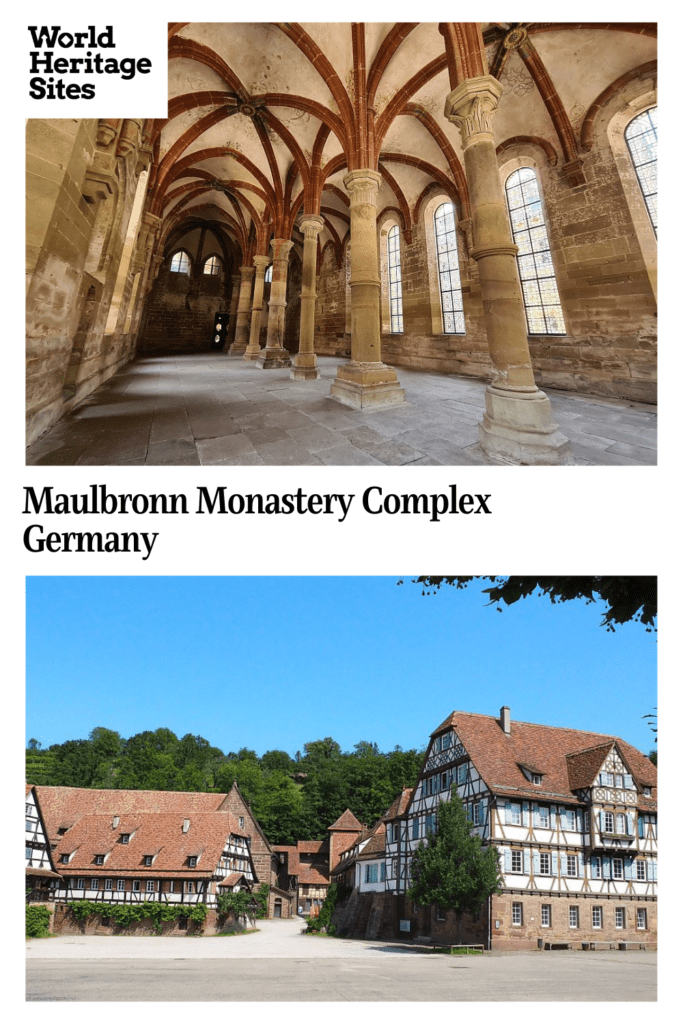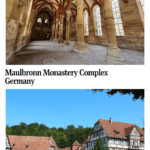Maulbronn Monastery Complex
By Rachel Heller
What is Maulbronn Monastery Complex?
Maulbronn Monastery Complex is a complete and intact collection of monastic buildings dating from the Middle Ages: the 12th to the 16th centuries. The style of the religious buildings is mostly Gothic with some earlier Romanesque elements, and they are arranged in a square around a beautiful cloister. The complex includes some beautiful half-timbered structures as well.
Disclosure: This article contains affiliate links. Making a purchase through an affiliate link will mean a small commission for this website. This will not affect your price. Privacy policy.
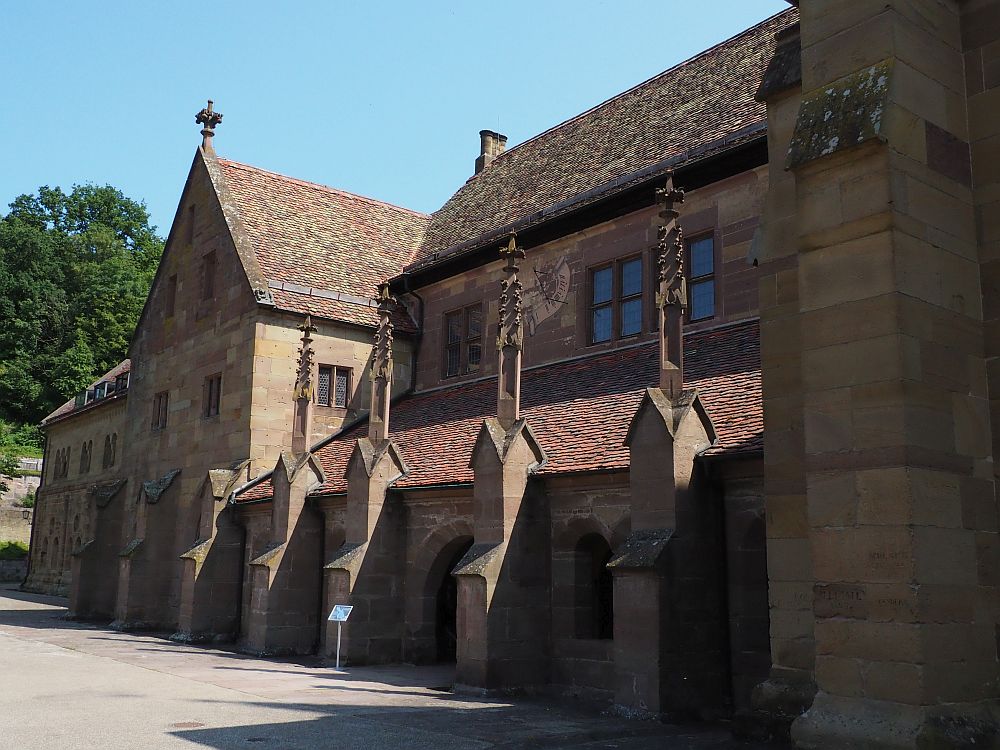
The monastery was founded in 1147 as a Cistercian monastery. The Cistercians were known for their skill in hydraulics, and the Maulbronn Monastery had a system of irrigation for their fields and fish farming as well as reservoirs, much of which is well-preserved.
After the Reformation the monastery went through some changes, including serving as a Protestant boarding school – where both Johannes Kepler and Hermann Hesse studied – now an Evangelical seminary. Much of the monastery has been expertly restored.
Why is Maulbronn a UNESCO World Heritage site?
The Romanesque and later Gothic architecture at this monastery, according to UNESCO, “had a major influence in the spread of Gothic architecture over much of northern and central Europe.” The monastery is the most complete Cistercian monastery in Europe, especially in terms of its water management system.
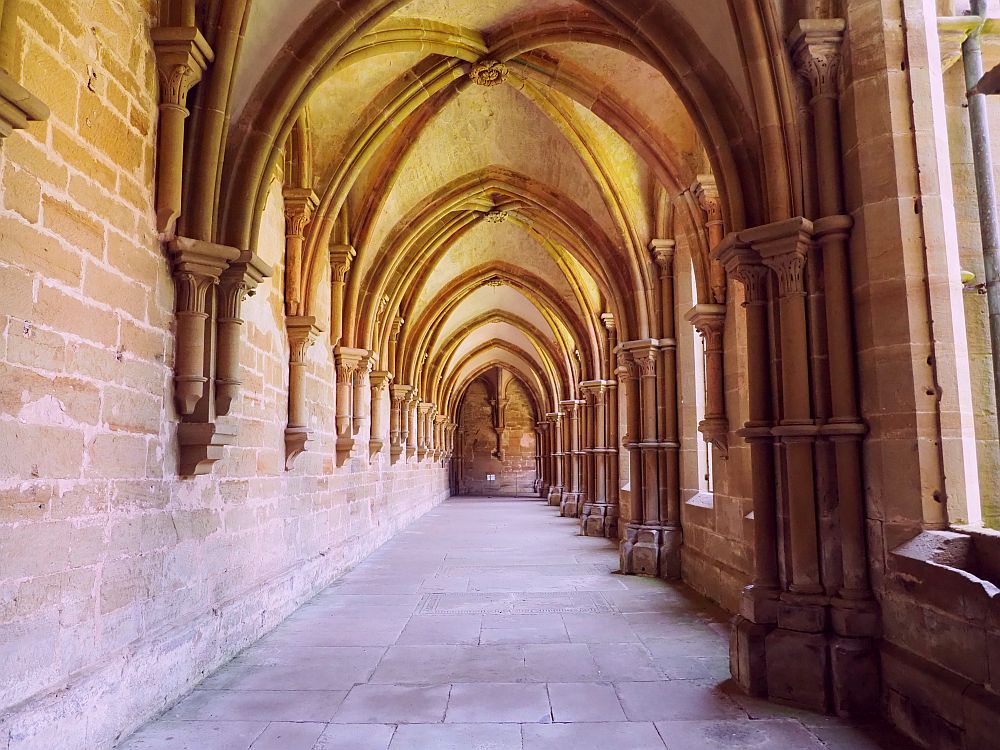
What can you expect on a visit to Maulbronn Monastery Complex?
Maulbronn looks like every film version of a medieval monastery you’ve ever seen. Originally fortified, as most such monasteries had to be in the Middle Ages, it still retains some of the original walls and towers. Entering the rectangular grounds, you’ll see a neat open courtyard, edged by pretty stone buildings with slate roofs on the right, the Romanesque/Gothic church and cloister straight ahead, and several large half-timbered buildings on your left.
There are a number of elements to look for:
- The entrance hall to the church is called “Paradise”, in early Gothic style. The doors to the church are almost 900 years old: the oldest in Germany, dating to the original church from 1178.
- The church hall is a great example of the transition from Romanesque to Gothic architecture, with rounded (Romanesque) arches along the sides but a roof with pointed (gothic) arches. The detailed wood carvings on the choir stalls are worth a close look.
- The Fountain House: the fountain in the cloister was used for cleaning but also for rituals. Only the bottom bowl of it is original. The water comes from a stream in the mountains nearby. Notice the painting on the ceiling above the fountain.
- The Refectories: The Monks’ Refectory was where the monks ate their meals. It’s quite grand, in early Gothic style. Notice the pulpit on one wall, where one monk would read aloud while everyone else ate in silence. The Lay Refectory is where the lay brothers ate.
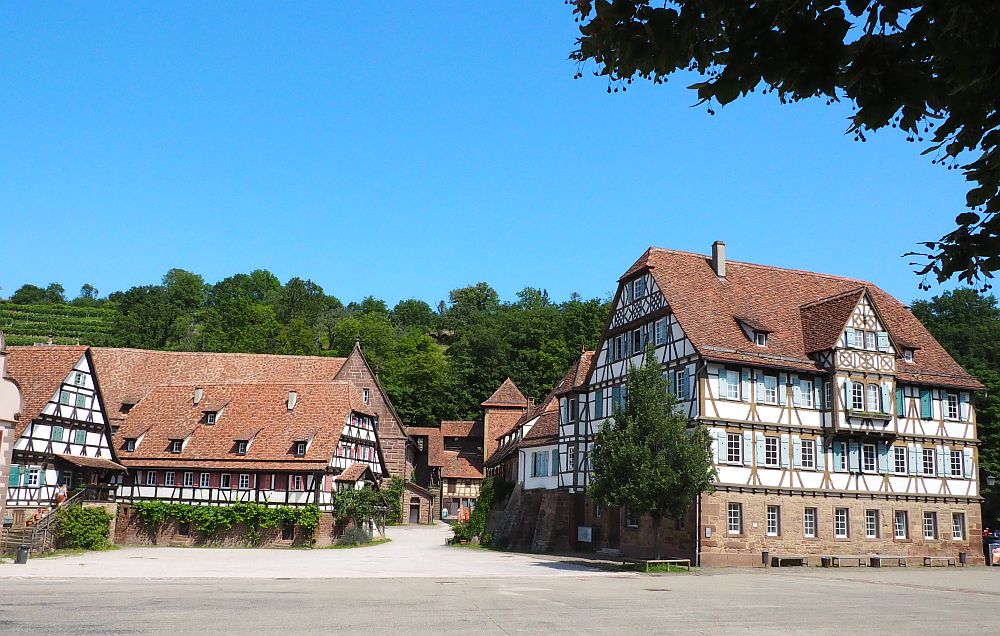
Other buildings in the complex serve as shops, restaurants, exhibition spaces, or are part of the seminary.
Outside the complex are some vestiges of the monks’ water management system. The Tiefer See, right near the complex, was once a reservoir and fish pond. Today it’s open for swimming and boating. You can also find drainage channels originally built by the monks.
Zoom out on the map below to find the nearest accommodations to Maulbronn:
Is Maulbronn worth visiting?
Maulbronn is a pleasant and pretty place to spend a few hours. Having said that, it’s probably not worth making a special trip for. On the other hand, if you are interested in the Middle Ages or in architecture, Maulbronn is certainly worth visiting: all it’s missing is the monks in their simple robes. It’s not easy to reach; you’d have to have a car, so factor that into your decision.
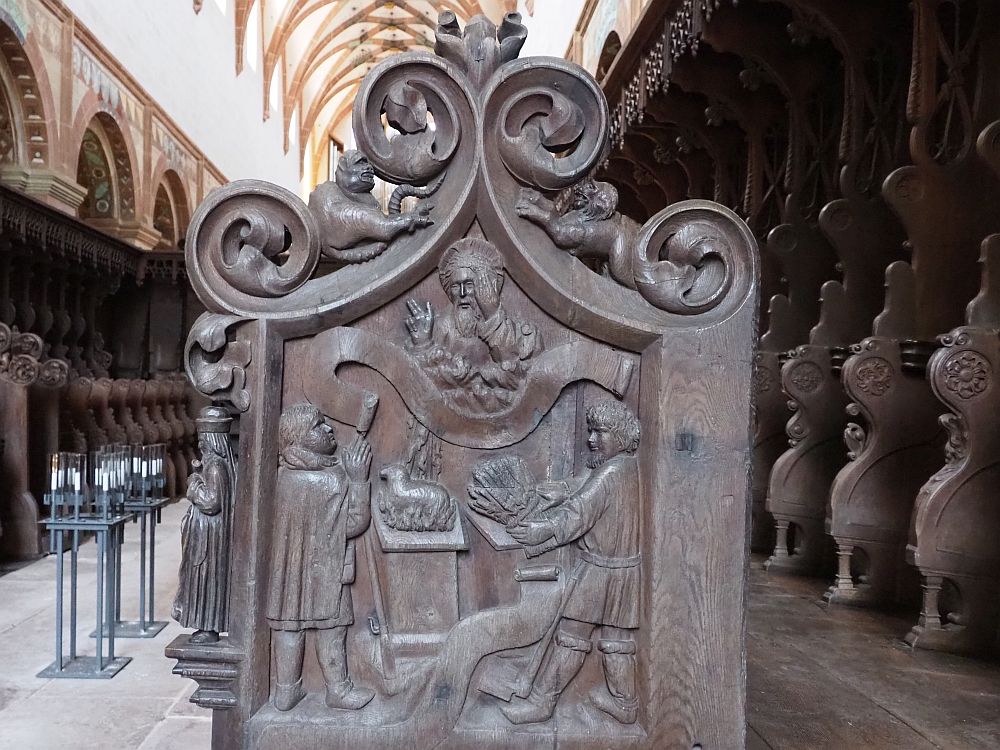
Tips for visiting Maulbronn
Depending on how much detail you want to take in, a visit would take anywhere from an hour to four hours. Don’t rush it; the cloister in particular gives an impression of monastic life. It’s very meditative.
Take your time throughout the church and cloister to notice details: the faded remnants of frescoes, the detailed and varied carved decorations on the pillars and other structural elements, and the masterful carvings on the choir stalls.
Part of the wall is accessible to walk on, allowing a partial view over the complex. The path up to the lake gives a view as well.
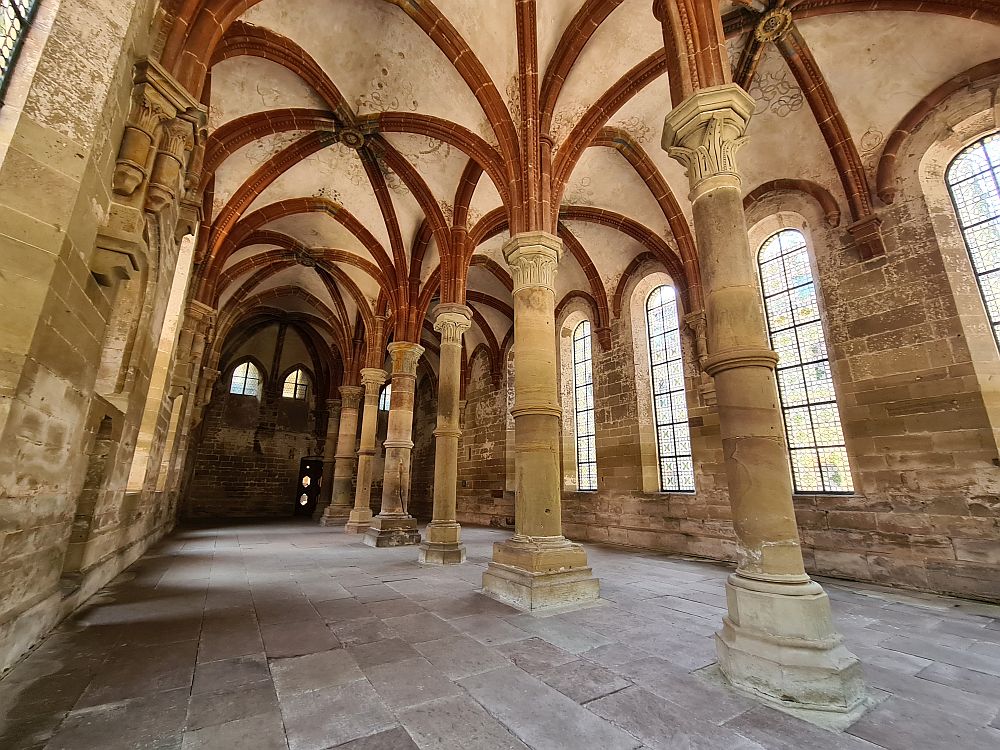
Where is Maulbronn?
The monastery’s address is Klosterhof 5 in Maulbronn. There is ample parking. It is about a two-hour drive from Freiburg and the Black Forest, an hour and a half from Strasbourg in France, and one hour from either Baden-Baden or Stuttgart.
Public transportation is more complicated and time-consuming. Take bus 700 from Bretten-Mühlacker or bus 734/735 from Pforzheim. From May to October, a train runs on Sundays and public holidays from Tübingen via Horb, Nagold, Calw and Pforzheim to Maulbronn.
For more information about Maulbronn Monastery Complex, its opening hours and admission fees, see its official website.
Have you been to Maulbronn? If so, do you have any additional information or advice about this UNESCO World Heritage site? Please add your comments below!
